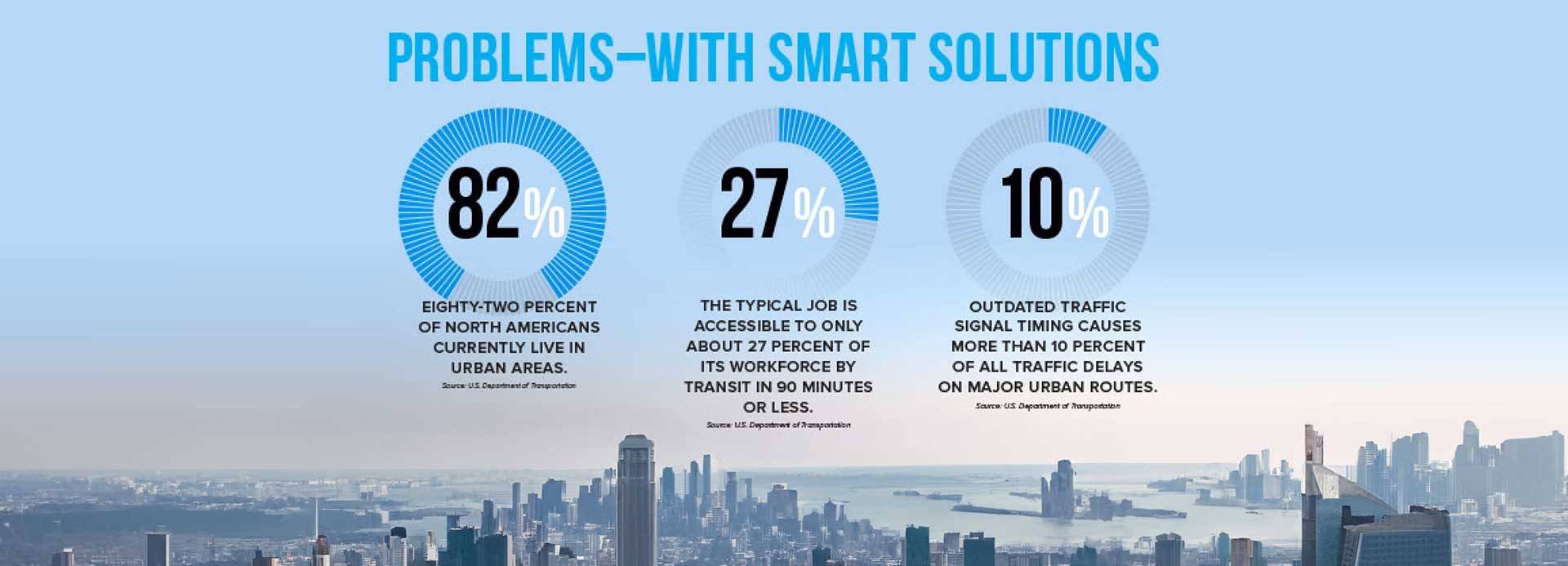
Facts and figures on smart cities efforts in the U.S. and the Infographic summarizing the status of smart in cities. This infographic points out the problems with Smart Solutions.
I found an infographic on Govtech which I thought we should take a look at. Back in 2018, they summarized the problems which are behind smart solutions for smart cities. The question I asked myself was, is this still the same in 2023? Well, let us look through the findings of 2018.
The mentioned infographic, “The Status of Smart” focused on the 7 US cities and named also the 10 players in the field.
Smart city solutions are typically designed to solve a host of issues common in urban areas across the U.S. From intelligent streetlights that monitor traffic from pedestrians, bicycles, cars, and more to sensors that monitor air quality, smart city leaders are using IoT (Internet of things) to make their communities more efficient and improve the value of personal life for residents.
Problems in Smart Solutions
To summarize the main problems which had been identified:
- 83% of North Americans currently live in urban areas.
- The typical job is accessible to only 27 percent of its workforce by transit in 90 minutes or less
- 10% outdated traffic signal timing causes more than 10 percent of all traffic delays on major urban routes
- Truck platooning using automated and connected vehicles could reduce truck CO2 emissions by 7 percent
- Trucks held up my metro area traffic and cost shippers $ 28 million each year in operating costs and fuel waste
Rolling the clock forward into the year 2023, do these challenges and problems still exist? Reading across multiple sources we can nail it down to 3 big areas of improvement which are required.
- Large project durations are set to 36 months which is too long to reach the state of efficiency
- Budgets are exploding and targets get missed, setting budgets beyond $ 1.5 million is common
- Benefits are not tangible for citizens, governments, researchers, or developers while using technology that may be outdated over 36 months
Is there a solution on the way? Can we see a way to cut costs, cut time in delivery, or improve the use cases?
Smart Solutions by TR1ton
The company TR1ton developed over 7 years a wireless smart sensor technology which is tackling this area. No expensive wiring is required and the components are state of the art.
By delivering smart sensors which can already execute decisions at the point of measurement, and combining sensors’ signals decisions can be made smarter.
For example:
If you want to see if the weather change affects commute travel time and motorists are at higher risk with the road condition we can combine sensor signal data to get more precise results. If the temperature sensors deliver a result of a 30% drop in temperature in one hour the wind speed increases by 10km/h over 1 hour, and air humidity indicates that ice formation is possible on the road you can take precise action. Now traffic telematic road signs can warn motorists about new weather conditions and road conditions.
Let us take the sample from 2018 of outdated traffic signal timing:
Since TR1ton smart endpoints (TR1ton endpoints combine 10 sensors and a smart intelligence unit in a single 40 mm x 40mm x 10 mm housing) can be programmed in a smart way to adjust and control a traffic light timing unit based on the volume of traffic participants, weather condition and maybe coming up traffic congestion, the result will be a better traffic flow. Traffic delays on urban routes can be avoided to the best, and CO2 can be reduced by keeping motorists in motion, reducing their waiting time.
In our upcoming blog article we will take a closer look at TR1ton technology and point out in which areas saving potential will be in money and time.


![What is the Artificial Intelligence of Things [Infographic] hero-image-infographic-Digital-Evolution-Series-Part-3](https://www.skillzme.com/wp-content/uploads/2024/11/hero-image-infographic-Digital-Evolution-Series-Part-3-200x200.jpg)
![3D Printing Facts: Printing in a Whole New Dimension [Infographic] hero-image-3d-printing-facts](https://www.skillzme.com/wp-content/uploads/2025/01/hero-image-3d-printing-facts-200x200.jpg)
![Top Software Development Trends for 2024 [Infographic] software development trends of 2024](https://www.skillzme.com/wp-content/uploads/2024/11/hero-image-software-development-trends-2024-200x200.jpg)


Recent Comments